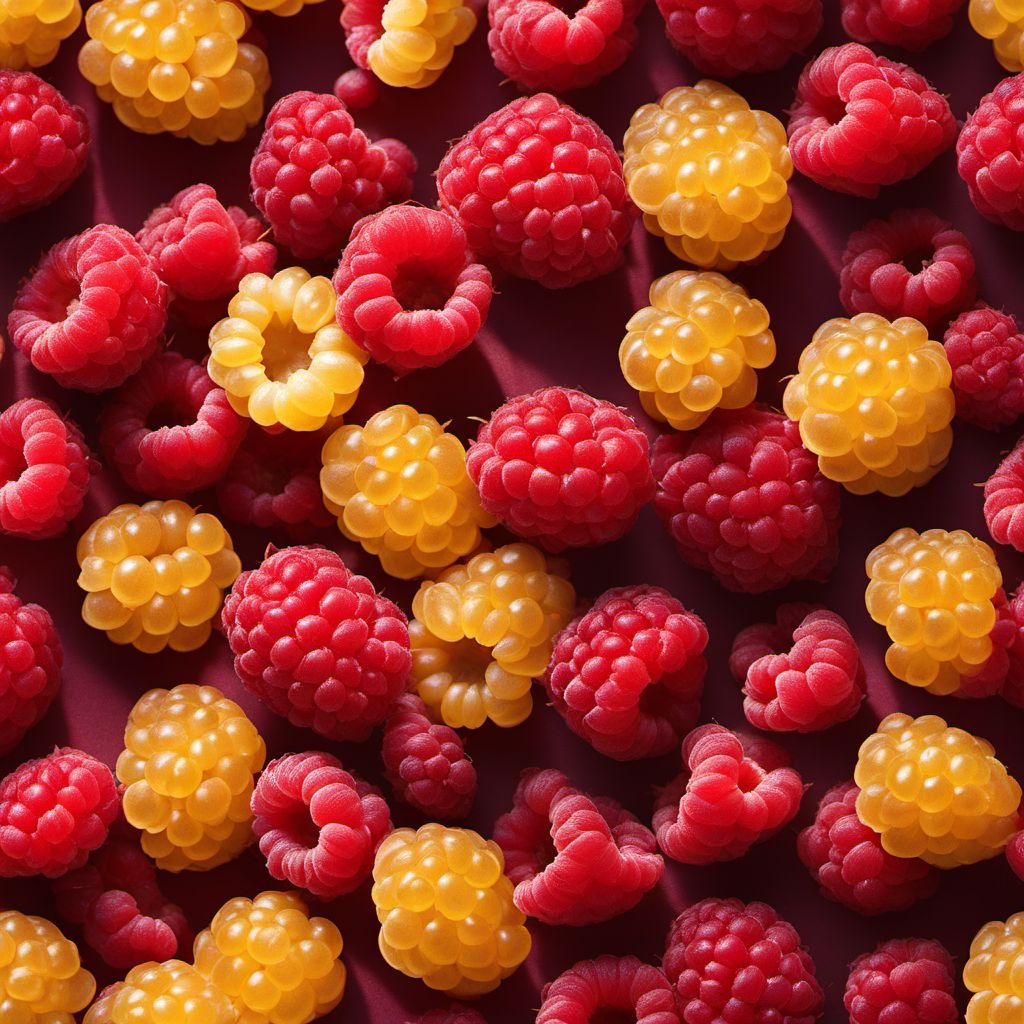
Ingredient
Raspberries (red and yellow)
"Nature's Sweet and Tangy Gems: Exploring the Vibrant World of Raspberries"
Raspberries, available in both red and yellow varieties, are small, delicate fruits with a soft texture and a unique combination of sweetness and tanginess. They are known for their distinctively bright colors, with red raspberries offering a rich, deep hue and yellow raspberries showcasing a sunny, golden shade. These berries are composed of multiple small drupelets, each bursting with juice and flavor. Their delicate texture makes them perfect for eating fresh, while their vibrant appearance adds a pop of color to various dishes.
Origins and history
Raspberries have a rich history that dates back centuries. Native to Europe, Asia, and North America, raspberries have been enjoyed for their taste and medicinal properties since ancient times. They were highly valued by the Greeks and Romans, who believed in their healing powers. Raspberries were later introduced to North America by European settlers in the 17th century. Today, they are cultivated worldwide, with major producers including the United States, Russia, and Poland.
Nutritional information
Raspberries are a nutritional powerhouse, packed with essential vitamins, minerals, and antioxidants. They are low in calories, high in fiber, and a great source of vitamin C. A 1-cup serving of raspberries provides approximately 64 calories, 8 grams of fiber, and 54% of the recommended daily intake of vitamin C.
Allergens
Raspberries are generally considered safe for consumption, but individuals with known allergies to berries should exercise caution.
How to select
When selecting raspberries, look for plump, firm berries that are brightly colored and free from mold or bruises. Avoid berries that are overly soft or mushy. It's also a good idea to check the bottom of the container for any signs of leakage, which may indicate spoilage.
Storage recommendations
To prolong the freshness of raspberries, store them in the refrigerator in a breathable container, such as a paper bag or a loosely covered container. Avoid washing raspberries until just before use to prevent them from becoming mushy. They are best consumed within a few days of purchase.
How to produce
Amateur gardeners can grow raspberries by planting them in well-drained soil with plenty of sunlight. They can be grown in containers or in the ground, and regular pruning is necessary to maintain healthy plants and encourage fruit production.
Preparation tips
Raspberries are incredibly versatile and can be enjoyed in various ways. They are perfect for snacking on their own, adding to salads, blending into smoothies, or using as a topping for desserts. To preserve their delicate texture, handle raspberries gently and avoid excessive stirring or cooking. Rinse them gently under cold water just before using and pat them dry with a paper towel.
Substitutions
If raspberries are not available, blackberries or strawberries can be used as suitable substitutes due to their similar texture and flavor profiles.
Culinary uses
Raspberries are widely used in both sweet and savory dishes. They are commonly used in desserts such as pies, tarts, cakes, and ice creams. They also pair well with savory ingredients like goat cheese, balsamic vinegar, and grilled meats. Additionally, raspberries can be made into jams, jellies, and sauces, adding a burst of flavor to breakfast spreads or savory glazes.
Availability
Raspberries are commonly available in regions with temperate climates, including North America, Europe, and parts of Asia. They are also cultivated in countries such as the United States, Mexico, Canada, and Poland.
More ingredients from this category

Nectar raspberries
The Luscious Delight: Exploring the World of Nectar Raspberries

Arctic brambles
The Arctic Delicacy: Exploring the Unique Flavors of Arctic Brambles

Black raspberries
Jewels of the Berry World

Korean black raspberries
The Nutty Delights: Pistachios and Their Kin
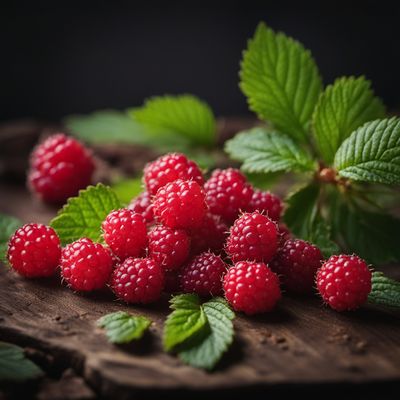
Wineberries
The Jewel of Summer: Wineberries
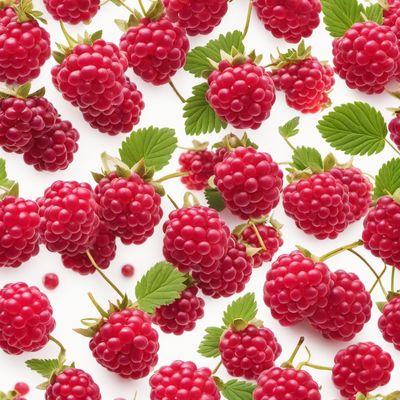
Korean raspberries
The Tangy Gems
Recipes using Raspberries (red and yellow) » Browse all

Kuih Lapis - Malaysian Layered Cake
Rainbow Delight: A Vibrant Twist on Malaysian Layered Cake

Indonesian Chinese Style Fruit Martorana
Sweet and Colorful Fruit Delights: Indonesian Chinese Style Fruit Martorana

Pesche di Prato - Italian Peach Cookies
Delizioso Dolce: Irresistible Italian Peach Cookies
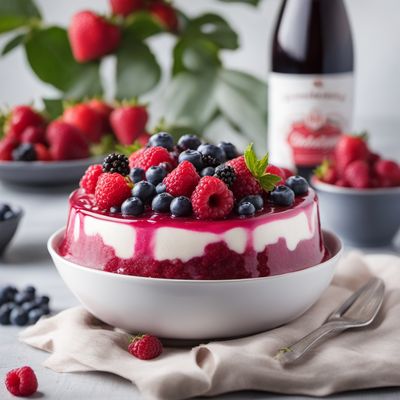
Brandenburg Berry Delight
Refreshing Summer Berry Dessert with a Brandenburg Twist

Frutta Martorana - Sicilian Marzipan Fruit
Sicilian Delight: Handcrafted Marzipan Fruits

Eton Mess with a Twist
Berry Delight: A Modern Twist on Eton Mess

Traditional Scottish Cranachan Pudding
Heavenly Whisky-Infused Raspberry Delight
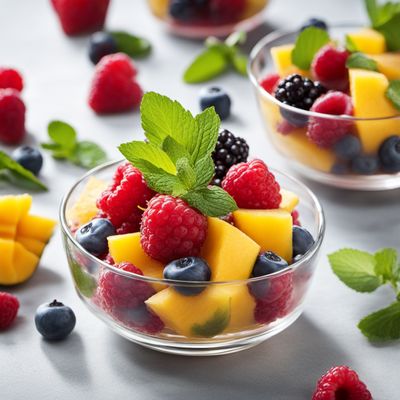
Danish Summer Delight
Tropical Fruit Medley with a Danish Twist

Brioche Saint Genix
Raspberry Delight Brioche

Bavarian Pavlova
Bavarian Dream Delight

Petit Four Delight
French Delicacy: Petit Four Delight
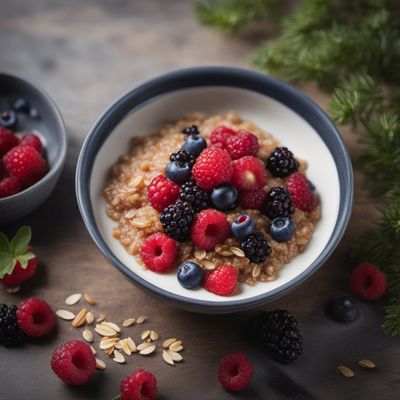
Scottish Oatmeal Porridge with Whisky-Infused Berries
Whisky-Infused Scottish Oatmeal Porridge: A Hearty Breakfast Delight